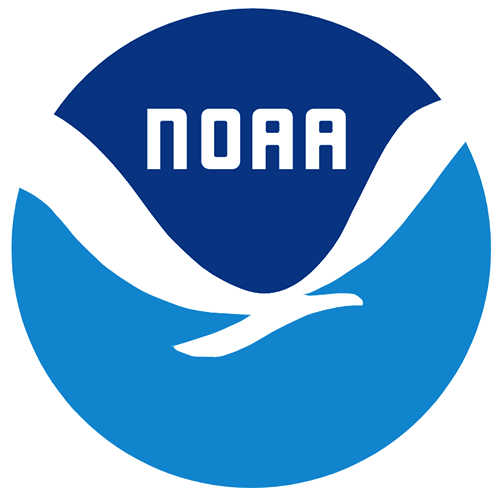2009 - 2011 Topobathy Elevation: Coastal California (2013 merge)
Welcome Guest ( Sign In )
NOAA
 This project merged recently collected topographic, bathymetric, and acoustic elevation data along the entire California coastline from approximately the 10 meter elevation contour out to California's 3 mile state water's boundary.Topographic LiDAR:The topographic lidar data used in this merged project was the 2009-2011 CA Coastal Conservancy Lidar Project. The data were collected between October 2009 and August 2011. This collection was a joint effort by the NOAA Office for Coastal Management (OCM); the California State Coastal Conservancy (SCC) Ocean Protection Council (OPC); Scripps Institution of Oceanography; and the Joint Airborne Lidar Bathymetry Technical Center of Expertise (JALBTCX). The data coverage extends landward 500 m from the shoreline, along the entire California coastline. The LAS classifications are as follows: 1-Unclassified, 2-Ground, 7-Noise, 9-Water, 10- Mudflats, 12-Overlap. The LAS points were manually re-classified from water and unclassified to ground in offshore areas where necessary.Bathymetric LiDAR: The bathymetric lidar data used in this merged project was 2009-2010 U.S. Army Corps of Engineers (USACE) Joint Airborne Lidar Bathymetry Center of Expertise (JALBTCX) lidar, provided by JALBTCX. The data were collected for the California Coastal Mapping Project (CCMP). The original data were in ASCII format and were converted to LAS v1.2. The LAS data were classified as follows: 21-Non-submerged Bathymetry, 22-Bathymetry, 23-Ignored Submerged Bathymetry/Overlap.Multibeam Acoustic Data: The acoustic data data used in this merged project were provided by the California Seafloor Mapping Program (CSMP) Ocean Protection Council and NOAA's National Geophysical Data Center (NGDC). The original data were in ASCII format and were converted to LAS v1.2. NOAA's VDatum software was used to vertically transform soundings from mean lower low water (MLLW) tidal datum to NAVD88 orthometric datum where necessary. The LAS data were classified as follows: 25-Submerged Acoustic, 26-Ignored Submerged Acoustic/Overlap.Upon receipt of the data, the NOAA Office for Coastal Management (OCM) converted some of the classifications for data storage and Digital Coast provisioning purposes. The following are the classifications of data available from the NOAA Digital Coast: 1 - Unclassified, 2 - Ground, 7 - Low point (noise), 9 - Water, 11 - Bathymetry, 12 - Overlap, 13 - Submerged Acoustic, 14 - Non-Submerged Bathymetry, 15 - Ignored Submerged Bathymetry/Overlap, 16 - Ignored Submerged Acoustic/Overlap
Original contact information:
Contact Org: NOAA Office for Coastal Management
Phone: 843-740-1202
Email: coastal.info@noaa.gov
This data set is an LAZ (compressed LAS) format file containing LIDAR point cloud data.
This project merged recently collected topographic, bathymetric, and acoustic elevation data along the entire California coastline from approximately the 10 meter elevation contour out to California's 3 mile state water's boundary.Topographic LiDAR:The topographic lidar data used in this merged project was the 2009-2011 CA Coastal Conservancy Lidar Project. The data were collected between October 2009 and August 2011. This collection was a joint effort by the NOAA Office for Coastal Management (OCM); the California State Coastal Conservancy (SCC) Ocean Protection Council (OPC); Scripps Institution of Oceanography; and the Joint Airborne Lidar Bathymetry Technical Center of Expertise (JALBTCX). The data coverage extends landward 500 m from the shoreline, along the entire California coastline. The LAS classifications are as follows: 1-Unclassified, 2-Ground, 7-Noise, 9-Water, 10- Mudflats, 12-Overlap. The LAS points were manually re-classified from water and unclassified to ground in offshore areas where necessary.Bathymetric LiDAR: The bathymetric lidar data used in this merged project was 2009-2010 U.S. Army Corps of Engineers (USACE) Joint Airborne Lidar Bathymetry Center of Expertise (JALBTCX) lidar, provided by JALBTCX. The data were collected for the California Coastal Mapping Project (CCMP). The original data were in ASCII format and were converted to LAS v1.2. The LAS data were classified as follows: 21-Non-submerged Bathymetry, 22-Bathymetry, 23-Ignored Submerged Bathymetry/Overlap.Multibeam Acoustic Data: The acoustic data data used in this merged project were provided by the California Seafloor Mapping Program (CSMP) Ocean Protection Council and NOAA's National Geophysical Data Center (NGDC). The original data were in ASCII format and were converted to LAS v1.2. NOAA's VDatum software was used to vertically transform soundings from mean lower low water (MLLW) tidal datum to NAVD88 orthometric datum where necessary. The LAS data were classified as follows: 25-Submerged Acoustic, 26-Ignored Submerged Acoustic/Overlap.Upon receipt of the data, the NOAA Office for Coastal Management (OCM) converted some of the classifications for data storage and Digital Coast provisioning purposes. The following are the classifications of data available from the NOAA Digital Coast: 1 - Unclassified, 2 - Ground, 7 - Low point (noise), 9 - Water, 11 - Bathymetry, 12 - Overlap, 13 - Submerged Acoustic, 14 - Non-Submerged Bathymetry, 15 - Ignored Submerged Bathymetry/Overlap, 16 - Ignored Submerged Acoustic/Overlap
Original contact information:
Contact Org: NOAA Office for Coastal Management
Phone: 843-740-1202
Email: coastal.info@noaa.gov
This data set is an LAZ (compressed LAS) format file containing LIDAR point cloud data.
Open Access: Unrestricted access and processing of this dataset has been temporarily enabled to support response to the Los Angeles County, CA wild fires
